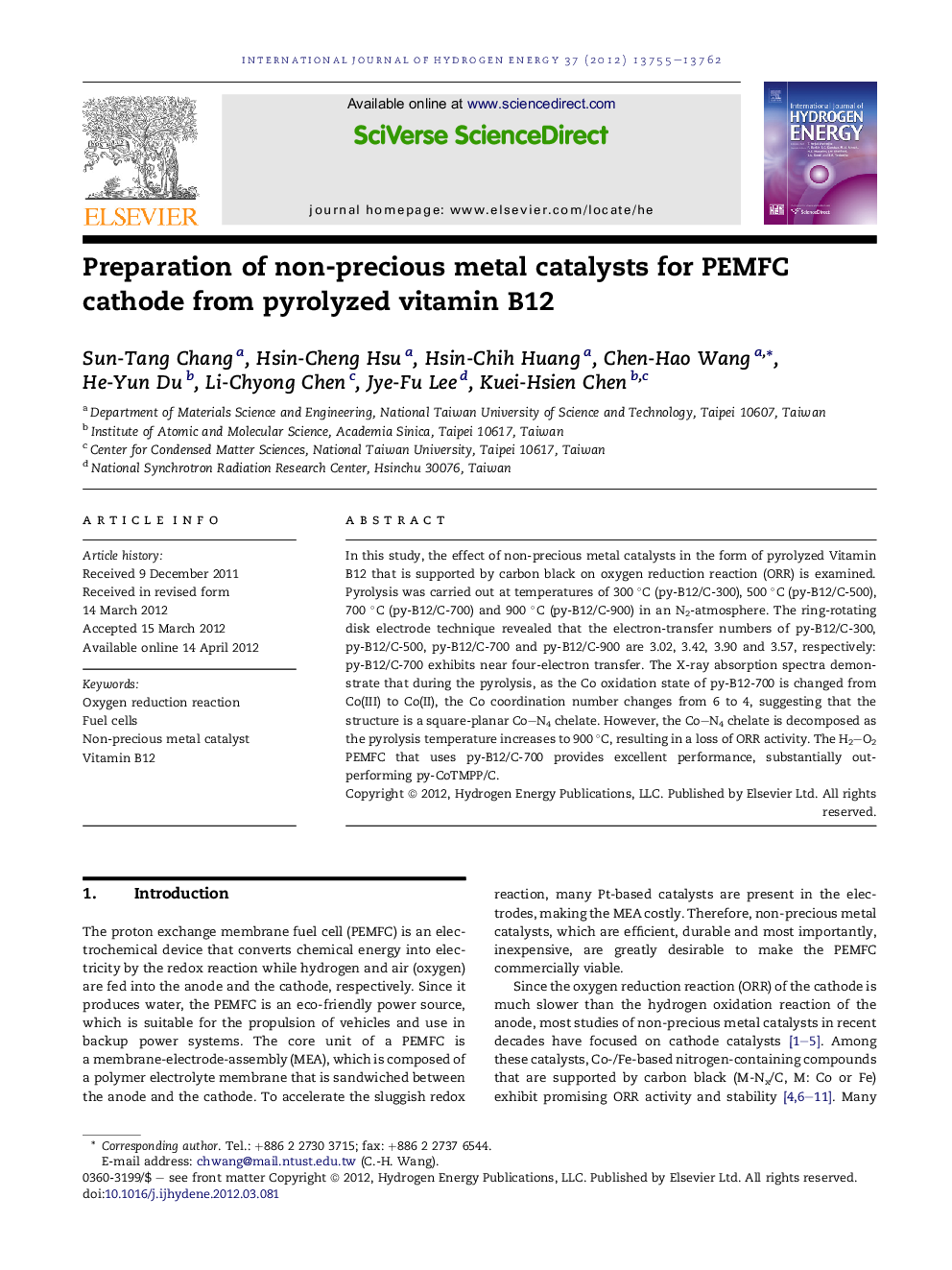| Article ID | Journal | Published Year | Pages | File Type |
|---|---|---|---|---|
| 1282280 | International Journal of Hydrogen Energy | 2012 | 8 Pages |
In this study, the effect of non-precious metal catalysts in the form of pyrolyzed Vitamin B12 that is supported by carbon black on oxygen reduction reaction (ORR) is examined. Pyrolysis was carried out at temperatures of 300 °C (py-B12/C-300), 500 °C (py-B12/C-500), 700 °C (py-B12/C-700) and 900 °C (py-B12/C-900) in an N2-atmosphere. The ring-rotating disk electrode technique revealed that the electron-transfer numbers of py-B12/C-300, py-B12/C-500, py-B12/C-700 and py-B12/C-900 are 3.02, 3.42, 3.90 and 3.57, respectively: py-B12/C-700 exhibits near four-electron transfer. The X-ray absorption spectra demonstrate that during the pyrolysis, as the Co oxidation state of py-B12-700 is changed from Co(III) to Co(II), the Co coordination number changes from 6 to 4, suggesting that the structure is a square-planar Co–N4 chelate. However, the Co–N4 chelate is decomposed as the pyrolysis temperature increases to 900 °C, resulting in a loss of ORR activity. The H2–O2 PEMFC that uses py-B12/C-700 provides excellent performance, substantially outperforming py-CoTMPP/C.
► We use vitamin B12-based catalysts for the substitution of Pt in a PEMFC. ► Vitamin B12-based catalysts pyrolyzed at 700 °C reveal high ORR activity. ► The square-planar Co–N4 chelate is responsible for enhancing ORR activity. ► Vitamin B12-based catalysts are superior to porphyrin catalysts used in PEMFC.
